
Spec Comparison: Ford EcoSport Vs Maruti Suzuki Vitara Brezza Vs Tata...
- Nov 13, 2017
- Views : 12299

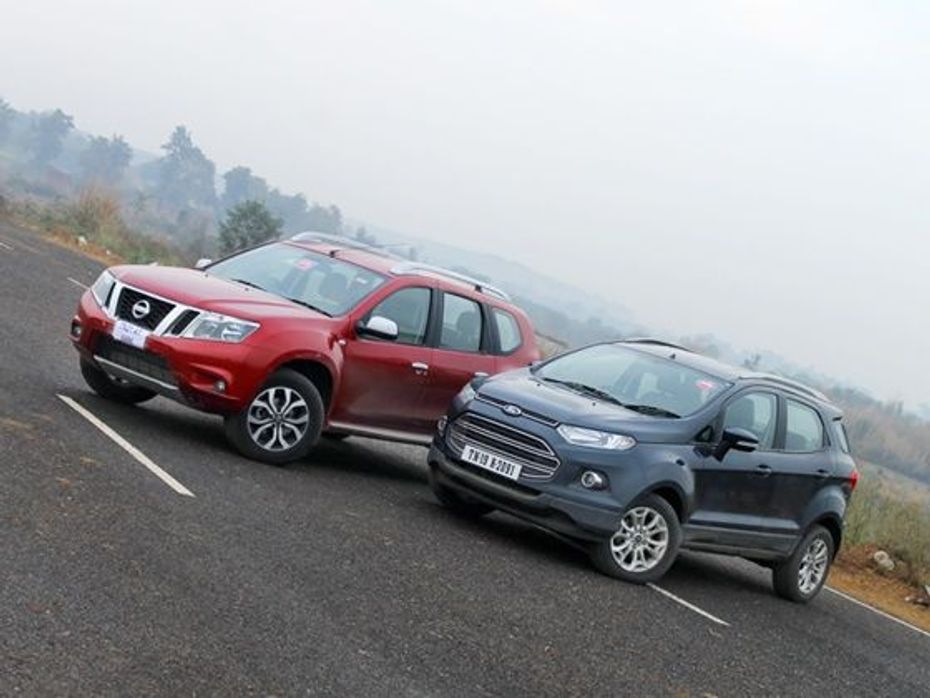
In one corner, you’ve got Ford’s EcoSport TDCi, that’s taken the Indian car market by storm and ruffled a few feathers across segments, be it hatchbacks, sedans or MPVs. In the other is the Terrano dCi 110 PS. The Nissan is everything what the Duster is but does it wearing a dapper outfit. Now you have a dilemma, the city-cool EcoSport or the urban yet rugged Terrano.
While the EcoSport diesel has 91 PS on tap, the Terrano has 110 PS so does that give the Terrano it’s edge? It does, yet loses it as quickly since it is about Rs 3 lakh costlier than the EcoSport. There’s more though to these two cars than just power and price, and before I start sounding like a politician, let me start by telling you why these cars are catching the fancy of every Indian car buyer around the Rs 10-12 lakh mark.
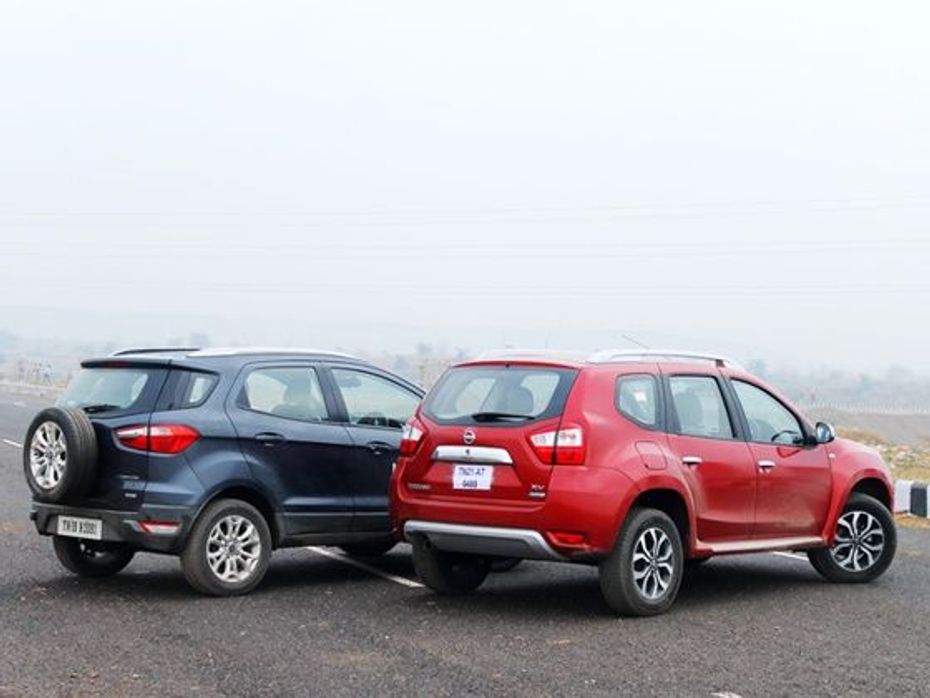
Standing Tall
Both these compact SUVs have everything from premium hatchbacks like the Hyundai i20 to midsize sedans like the Hyundai Verna and VW Vento in their crosshairs. That’s because both offer the space of a sedan, the practicality of a hatchback and the imposing stance the hatchback and the sedan lack. This coupled with a frugal diesel engine and the ability to tackle broken roads like they should, give both these SUVs the edge. Between the two when seen from their side profile, the EcoSport’s stubby front end and relatively odd dimensions compared to the Terrano’s proper SUV stance give the Nissan a point over the Ford.
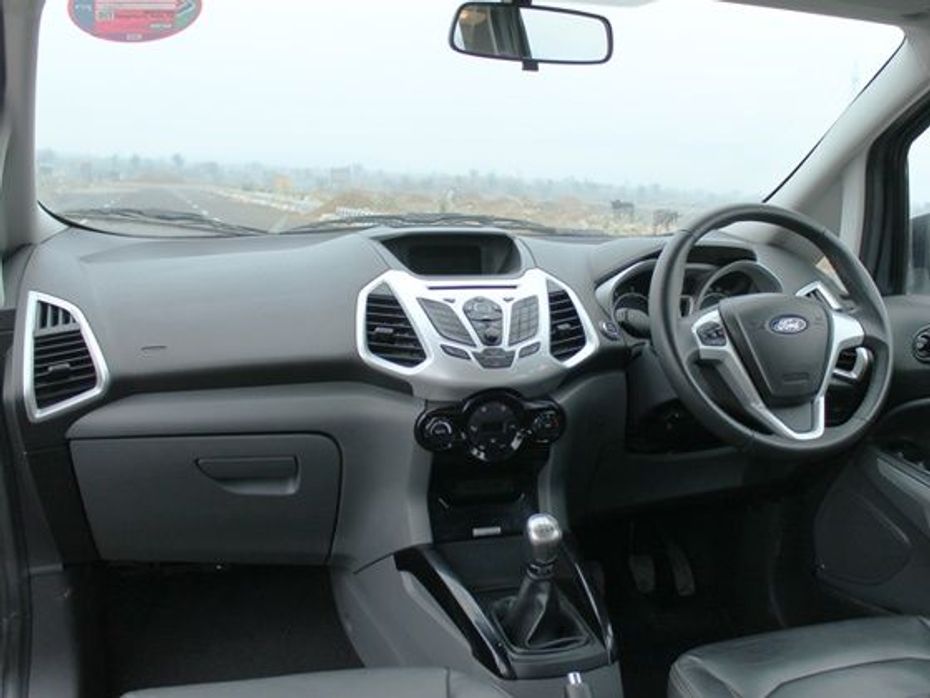
Inside Man
It’s a pleasant surprise to step into the EcoSport. To get the car under the 4-metre mark, Ford designers kept the front as compact as possible and that meant encroaching on interior space. The high and deep set dashboard masks the engine bay well and to keep things interesting, has large swooping lines that give it a modern look. The Terrano looks more orthodox in comparison to the flamboyant EcoSport. The dashboard layout is as you would expect in an SUV with chrome and silver plastic livening the cabin to an extent. Quality of materials on both cars aren’t too good, especially the lower light grey plastics on the EcoSport feels built to a price.
The Terrano has some flawed ergonomics like the mirror adjustment controls under the handbrake and the upright central console. The EcoSport’s slanted console is easier to use but could do with fewer buttons.
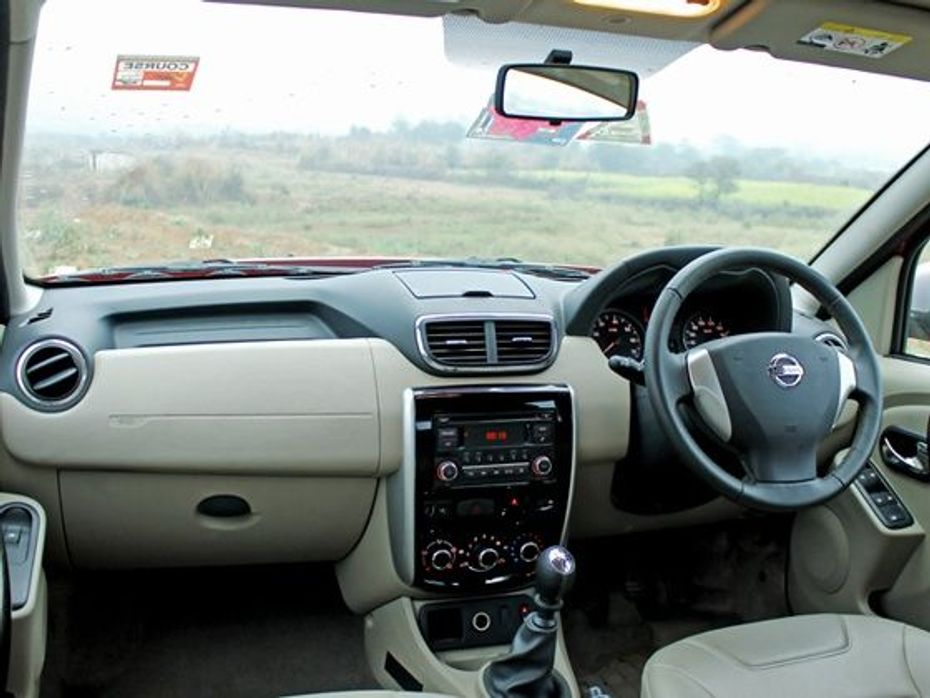
It’s the driver’s seat in the Ford you will want to spend most of your time in. Getting a good driving position is easy as the steering can be adjusted for rake and reach and the driver gets variable height adjustment, lumbar support and an armrest on the top-of-the-line Titanium with option pack variant. The Terrano seat height adjustment has only two steps and the steering adjusts only for rake and not reach. That said, you will get a better view of your surroundings from the Terrano as the window line is low and the dashboard is small. The EcoSport’s thick A-pillar and small quarter glass create a huge blind spot and forces you to sit higher for better visibility.
The Nissan scores over the EcoSport in the rear as three passengers can comfortably sit abreast and get the added comfort of a rear AC vent. The EcoSport’s rear bench is strictly for two well built passengers and a kid at the most. Its boot suffers because of its compact dimensions, which at just 346 litres is considerably smaller to the Terrano’s 475 litres. Also the boot opens on the wrong side for right hand drive markets like ours and is heavy to shut with the spare wheel bolted to it.
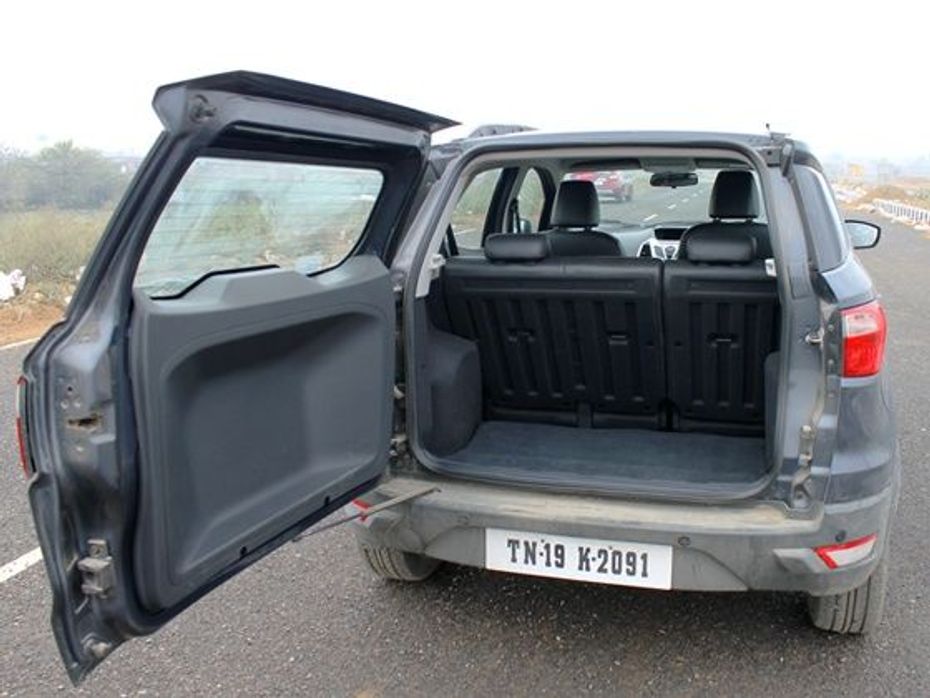
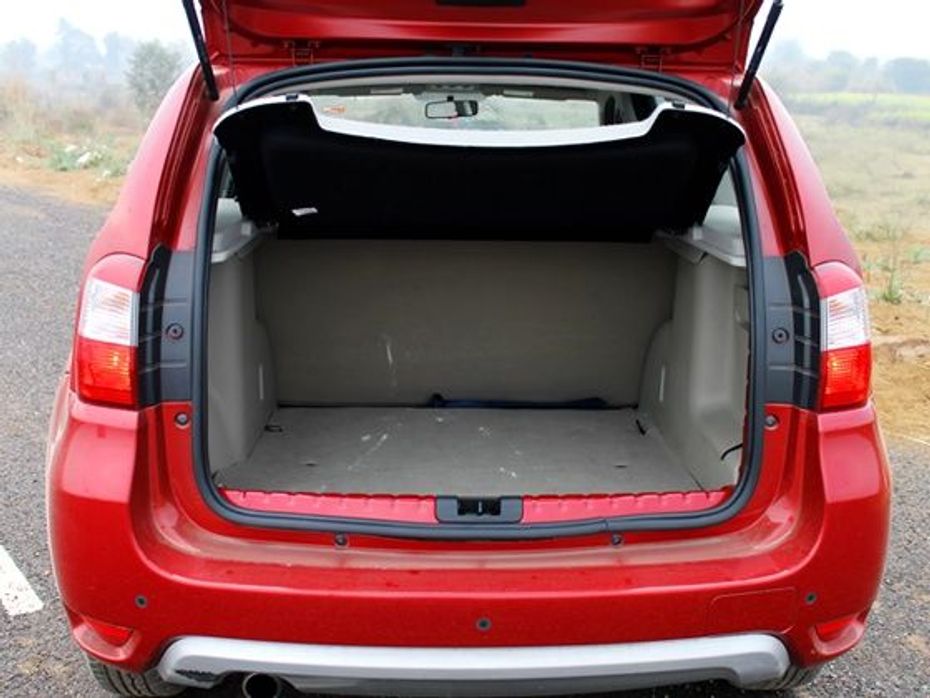
The Ford has better sound insulation and feels more solidly built compared to the Terrano. The doors shut with a nice thunk and road noise is minimal. It’s only when the engine is strained that you get some of the vibrations through to the cabin.
Being the cheaper car to buy, you’d expect the EcoSport to fall short on the equipment list but it doesn’t. In fact, with Microsoft powered SYNC that controls a host of functions using voice commands, auto climate-control, six airbags and push button start among its long list of features, it makes the Terrano feel too bare-bones basic. The Terrano gets two airbags, manual air-conditioning and doesn’t even have steering mounted controls for an Rs 13 lakh plus car.
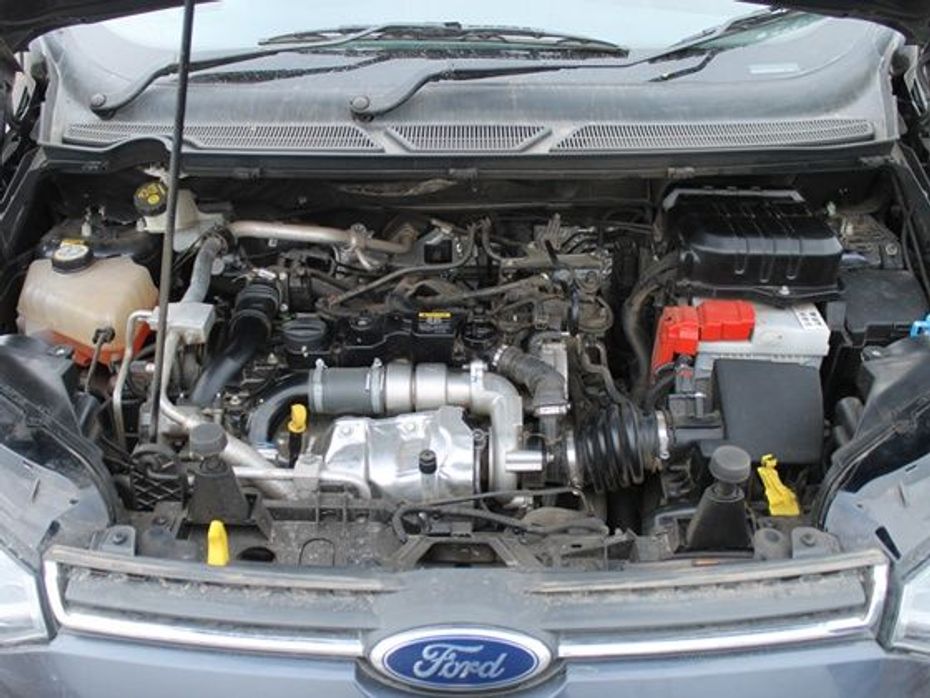
On the Run
The EcoSport is powered by the same 1.5-litre TDCi mill from the Fiesta. It produces 91 PS of power at 3750 rpm and 204 Nm of torque between 2000-2750 rpm. The Terrano has a 1.5-litre K9K dCi motor under the hood delivering 110 PS of power at a slightly higher 3900 rpm and considerably more 248 Nm of torque at 2250 rpm. Despite the larger size of the Terrano, it weighs almost as much as the EcoSport, hence the extra power and torque definitely tilts the scales in its favour. The Nissan is faster to the tonne from standstill and has a higher top speed. Power delivery is linear in both and the turbo lag isn’t too prominent but the EcoSport has a relatively weaker bottom-end and feels most in its elements in the mid-range.
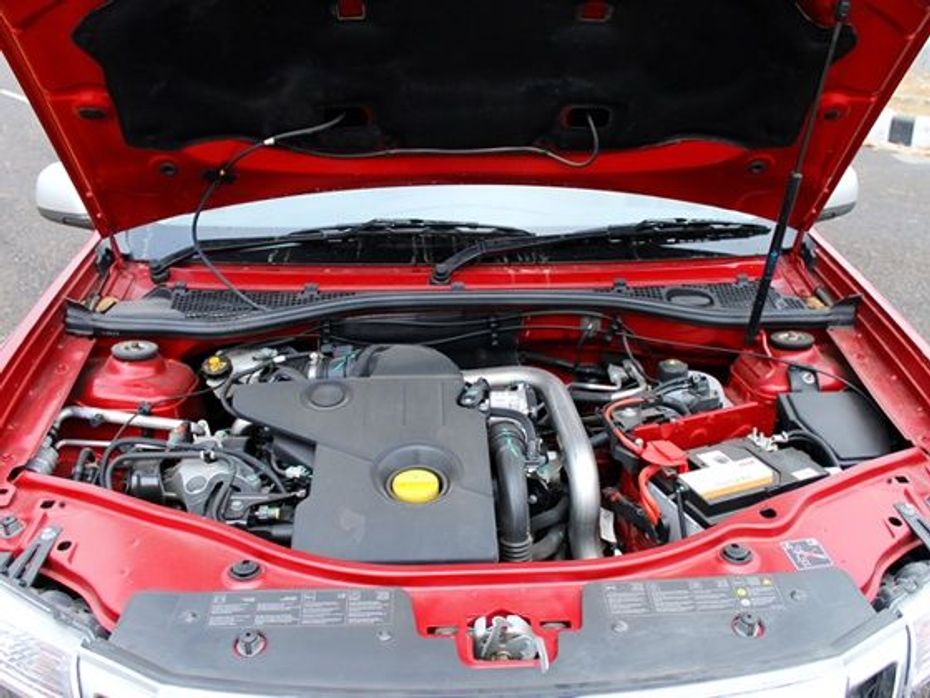
The 110 PS Terrano’s six speed transmission and higher torque rating make it a more accomplished highway cruiser. In the city through heavy traffic, the EcoSport scores with its light clutch and linear power delivery. Its five speed gearbox isn’t the best though with long throws and a rubbery feel. The Terrano on the other hand offers short throws with a nice mechanical feedback every time you slot in a gear.
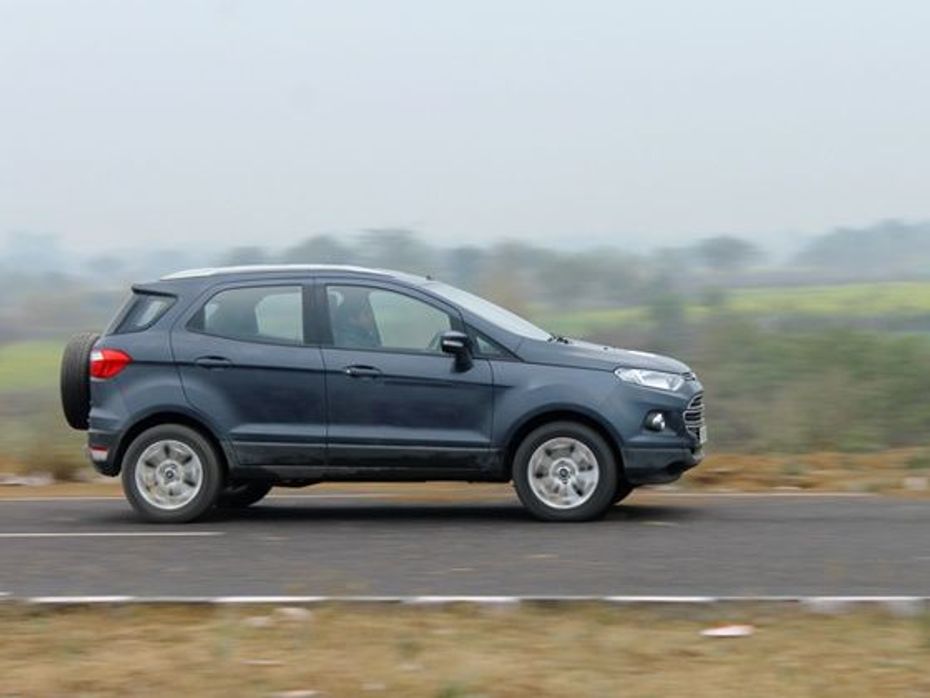
Through its paces
Both these SUVs have been derived from sedans and as a result are monocoque constructions with car-like dynamics. They are high set with more ground clearance than sedans and the resulting body roll is evident around corners but they still can be driven hard through winding roads.
The Ecosport has an electrically assisted power steering to the Terrano’s hydraulically assisted steering. While in city driving conditions, the Ford is clearly the easier one to drive, as the speeds go up, the steering doesn’t weigh up enough to give you confidence to push it harder. The hydraulic setup on the Terrano feels better at high speeds but the negative kick-back as you aggressively tackle corners is a bit unsettling. This cannot be eliminated in the hydraulic unit according to Nissan.
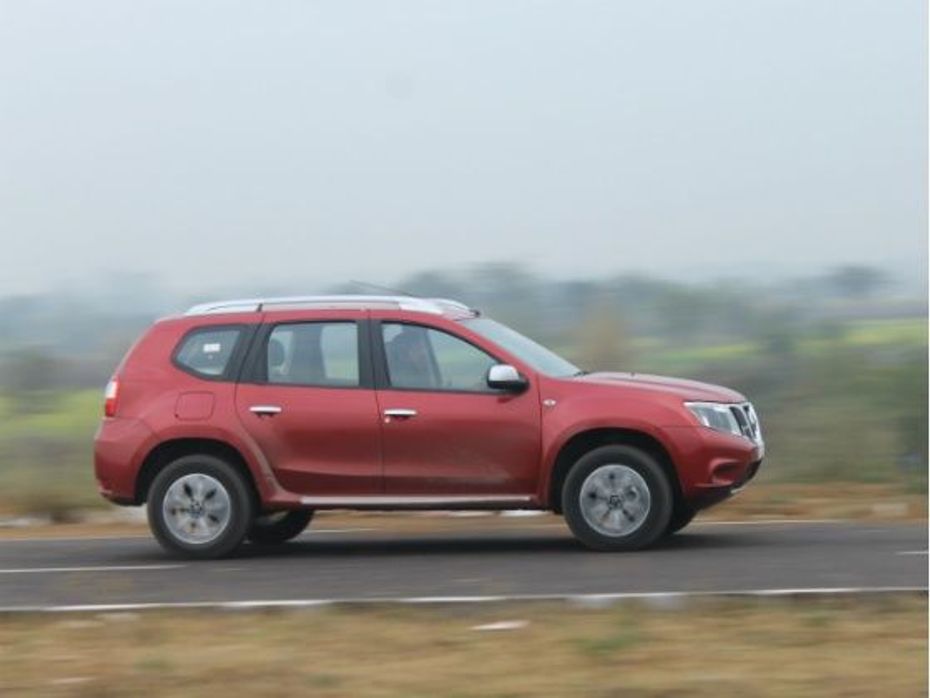
At low speeds the front suspension on the EcoSport diesel feels a bit stiff and doesn’t soak speed breakers and large potholes as well as we’d like. As you go faster, it feels better poised. The Terrano impresses with its ride quality and is the benchmark in its segment alongwith the Duster. The suspension is perfectly tuned for our potholed and poorly laid roads. On highways through undulating roads and over expansion joints of innumerable bridges, the Terrano is always composed. The EcoSport diesel gets only ABS and no Brake Assist or EBD like on the Terrano but its brakes have better feel.
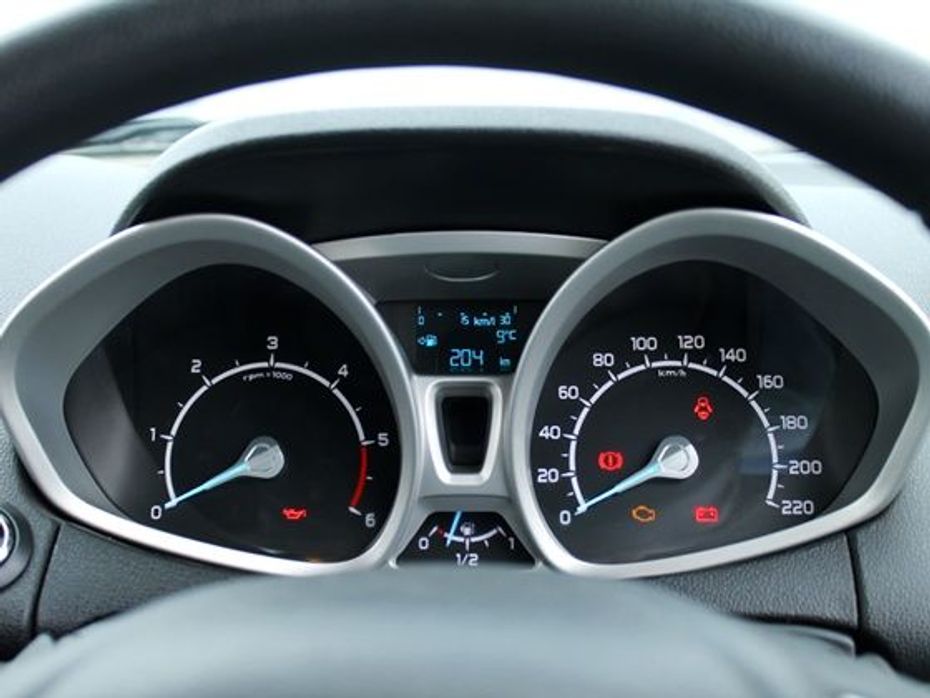
At the Pumps
There’s not much difference between the two in terms of fuel efficiency. The EcoSport has an ARAI certified figure of 22.7 kpl to the Terrano’s 19.01 kpl but in the real world the gap is narrower. It’s marginally higher efficiency and bigger fuel tank (52L vs 50L in the Terrano) gives it a larger range.
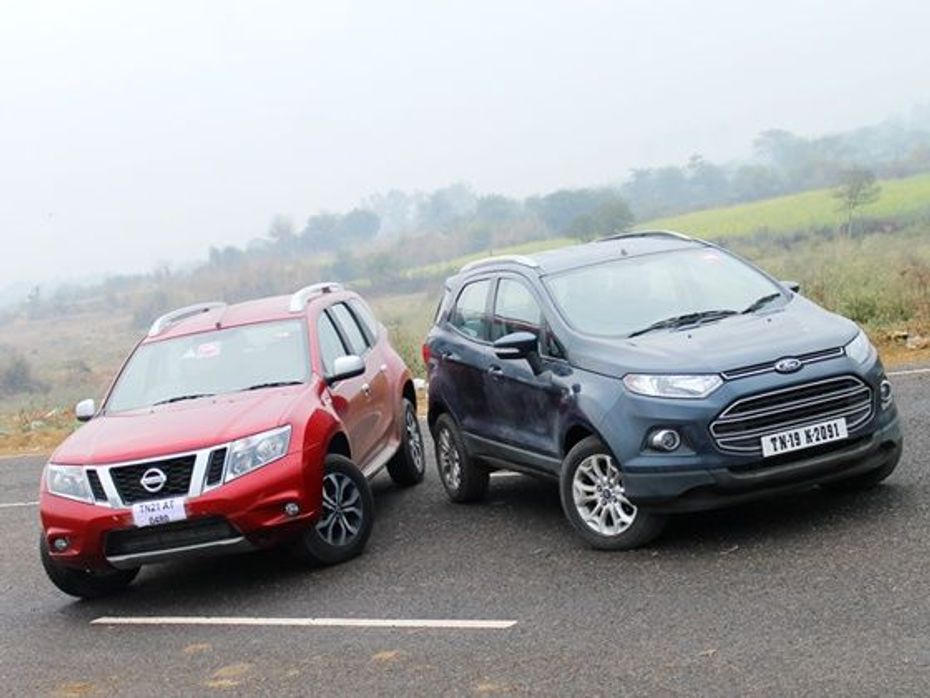
Verdict
For every time you want to give the car a proper workout, the Terrano is the one to go for. It has more power and torque, takes on corners better, has a sublime ride and a fantastic gearbox and that’s everything we’d look for in a car. The EcoSport though is the jack of all trades. It may not be as good as the Terrano in these departments but isn’t too far behind. That lost ground is clawed back with a lot more comfort and safety features and ease of driving in the city, making it a better car to live with. Where Jack becomes King though is when you are about to sign on the dotted line. Between these two top-end variants, the Terrano is over Rs 3 lakh costlier than the EcoSport and that just cannot be ignored. The Ford isn’t a lesser car by any means, it’s on par on road and much lighter on your wallet. Buy the Terrano for long highway drives, space and its imposing looks. As an all-rounder though, the EcoSport is clearly the one to go for.

Spec Comparison: Ford EcoSport Vs Maruti Suzuki Vitara Brezza Vs Tata...

Tata Nexon vs Maruti Suzuki Vitara Brezza: Comparison Review

2020 Hyundai Creta vs Kia Seltos: How Do The Korean Cousins Stack Up...

Hyundai Creta 2020 vs Kia Seltos | How Do I Pick One?

2020 Hyundai Creta vs Rivals: Specifications Compared

New Mahindra XUV300 Vs Rivals: Spec Comparison

XUV300 Vs EcoSport Vs Nexon: Sub-4 Meter Petrol SUVs Compared

Mahindra XUV300 vs Tata Nexon vs Ford EcoSport & Petrol MT Heat

Maruti Brezza Vs Tata Nexon Vs Ford EcoSport; Performance Compared

2020 Hyundai Venue BS6 vs Rivals: Diesel Engine Specifications...
India's largest automotive community
 No More Diesel-iMT Powertrain In India, As Kia Discontinues It For The Sonet, Seltos And Carens
No More Diesel-iMT Powertrain In India, As Kia Discontinues It For The Sonet, Seltos And Carens
 Hyundai Creta Electric: Things You Get With Each Of Its 5 Variants
Hyundai Creta Electric: Things You Get With Each Of Its 5 Variants
 Here Are Some Adrenaline Pumping Experiences From Auto Expo 2025 That You Should Not Miss!
Here Are Some Adrenaline Pumping Experiences From Auto Expo 2025 That You Should Not Miss!
 All You Need To Know About The Surprise Element At Auto Expo 2025: BMW iX1 LWB
All You Need To Know About The Surprise Element At Auto Expo 2025: BMW iX1 LWB
 Hyundai Creta
Rs. 11.10 Lakh
Hyundai Creta
Rs. 11.10 Lakh
 Tata Punch
Rs. 5.99 Lakh
Tata Punch
Rs. 5.99 Lakh
 Mahindra Thar ROXX
Rs. 12.99 Lakh
Mahindra Thar ROXX
Rs. 12.99 Lakh
 Tata Nexon
Rs. 7.99 Lakh
Tata Nexon
Rs. 7.99 Lakh
 Mahindra XUV700
Rs. 13.99 Lakh
Mahindra XUV700
Rs. 13.99 Lakh